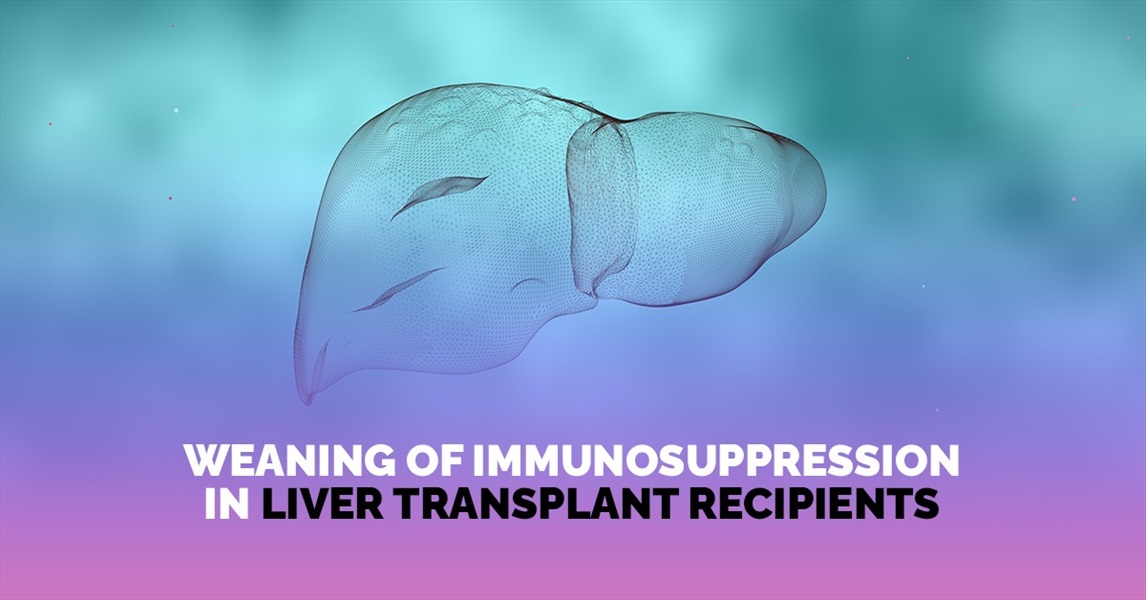Umpredictable scientific research n.3: Weaning of immunosuppression in liver transplant recipients
Scientific research is fascinating and often unpredictable. I want to provide three examples of something that happened to me that demonstrates that imagination and curiosity are essential in discovering scientific development. Still, possibly, persistence is even more critical.
Today, I will describe how we discovered microchimerism. This biological phenomenon allows, at times, donor lymphocytes to survive in the body of a liver transplant recipient and possibly, induce tolerance. In the early '90s, the pioneer of liver transplantation, Thomas E. Starzl, asked to examine all the liver transplant recipients alive for more than five years after transplantation. We discovered that some of them were no longer taking any anti-rejection drugs. That was considered impossible at the time. Studying them, we realized that some patients had donor lymphocytes "living together" with recipient lymphocytes in a sort of "peace treaty," We also learned that in several patients, it was possible to wean the immunosuppression. A concept that was considered heretical until that time.
Weaning of immunosuppression in liver transplant recipients12
by GEORGE .V MAZARIEGOS,3 JORGE REYES, IGNAZIO ROBERTO MARINO, ANTHONY .J DEMETRIS, BRIDGET FLYNN, WILLIAM IRISH, JOHN McMICHAEL, JOHN J. FUNG, AND THOMAS E. STARZL
Immunosuppression has been sporadically discontinued by noncompliant liver allograft recipients for whom an additional 4 1/2 years of follow-up is provided. These anecdotal observations prompted a previously reported prospective drug withdrawal program in 59 liver recipients.This prospective series has been increased to 95 patients whose weaning was begun between June 1992 and March 1996, 8.4 +/- 4.4 (SD) years after liver replacement. A further 4 1/2 years follow-up was obtained of the 5 self-weaned patients.
The prospectively weaned recipients (93 livers; 2 liver/ kidney) had undergone transplantation under immunosuppression based on azathioprine (AZA, through 1979), cyclosporine (CsA, 1980-1989), or tacrolimus (TAC, 1989-1994). In patients on CsA or TAC based cocktails, the adjunct drugs were weaned first in the early part of the trial. Since 1994, the T cell-directed drugs were weaned first. Three of the 5 original self-weaned recipients remain well after drug-free intervals of 14 to 17 years. A fourth patient died in a vehicular accident after 11 years off immunosuppression, and the fifth patient underwent retransplantation because of hepatitis C infection after 9 drug-free years; their allografts had no histopathologic evidence of rejection. Eighteen (19%) of the 95 patients in the prospective series have been drug free for from 10 months to 4.8 years. In the total group, 18 (19%) have had biopsy proved acute rejection; 7 (7%) had a presumed acute rejection without biopsy; 37 (39%) are still weaning; and 12 (13%, all well) were withdrawn from the protocol at reduced immunosuppression because of noncompliance (n=8), recurrent PBC (n=2), pregnancy (n=1), and renal failure necessitating kidney transplantation (n= 1). No patients were formally diagnosed with chronic rejection, but 3 (3%) were placed back on preexisting immunosuppression or switched from cyclosporine (CsA) to tacrolimus (TAC) because of histopathologic evidence of duct injury. Two patients with normal liver function died during the trial, both from complications of prior chronic immunosuppression. No grafts suffered permanent functional impairment and only one patient developed temporary jaundice. Long surviving liver transplant recipients are systematically overimmunosuppressed. Consequently, drug weaning, whether incomplete or complete, is an important management strategy providing it is done slowly under careful physician surveillance.
Complete weaning from CsA-based regimens has been difficult. Disease recurrence during drug withdrawal was documented in 2 of 13 patients with PBC and could be a risk with other autoimmune disorders.
The morbidity arising from the chronic use of antirejection medications is an incentive to establish the lowest possible level of immunosuppression necessary to maintain stable graft function. The finding that complete freedom from immunosuppression was sporadically possible in long-surviving recipients of liver (1) and kidney allografts (2) prompted a prospective trial of drug weaning (3). Although it was shown that significant reductions in medication or their discontinuance could be safely accomplished, the danger of consequent rejection has not been completely assessed and guidelines for judicious weaning need to be clarified. We present here further observations on 3 cohorts of liver recipients: 5 who self-weaned many years ago (1), 59 who were in the prospective weaning trial of Ramos et al. (3), and 36 who were subsequently entered.
[...] Read full article
REFERENCES
- StarzI TE, Demetris AJ, Trucco M, et al. Cell migration and chimerism after whole organ transplantation: the basis of graft acceptance. Hepatology 1993; 17: 1127.
- Mazariegos GV, Ramos H, Shapiro R, Zeevi A. Fung JJ, Starzl TE. Weaning of immunosuppression in long-term recipients of living-related renal transplants: a preliminary study. Transplant Proc 1995; 27: 207.
- Ramos HC, Reyes J, Abu-Elmagd K, et al. Weaning of immunosuppression in long-term liver transplant recipients. Transplantation 1995; 59: 212.
- Starzl TE, Iwatsuki S, Van Thiel DH, et al. Evolution of liver transplantation. Hepatology 1982; 2: 614.
- Fung JJ, Todo S, Jain A, Demetris AJ, McMichael JP, StarzI TE: The Pittsburgh randomized trial of tacrolimus versus cyclosporine for liver transplantation. J Am Coll Surg 1996; 183: 117.
- Demetris AJ, Fung JJ, Todo S, et al. Conversion of liver allograft recipients from cyclosporine to FK 506 immunosuppressive therapy-a clinicopathologic study of 96 patients. Transplantation 1992; 53: 1056.
- van Hoek B, Wiener RH, Krom RAF, Ludwig J, Moore SB. Severe ductopenic rejection following liver transplantation: incidence, time of onset, risk factors, treatment, and outcome. Semin Liver Dis 1992; 12: 41.
- StarzI TE, Demetris AJ, Murase N, Ildstad S, Ricordi C, Trucco Cell migration, chimerism, and graft acceptance. Lancet 1992; 339: 1579.
- Demetris AJ, Murase N, Fujisaki S, Fung JJ, Rao AS, StarzI TE. Hematolymphoid cell trafficking, microchimerism, and GHD reactions after liver, bone marrow, and heart transplantation. Transplant Proc 1993; 25: 3337.
- Qian S, Demetris Ad, Murase N, Rao AS, Fung JJ, StarzI TE. Murine liver allograft transplantation: tolerance and donor cell chimerism. Hepatology 1994; 19: 916.
- StarzI TE, Demetris AJ, Murase N, Trucco M, Thomson AW, Rao AS: The lost chord: microchimerism and allograft survival. Immunol Today, (in press).
- Murase N, StarzI TE, Tanabe M, et al. Variable chimerism, graft versus host disease, and tolerance after different kinds of cell and whole organ transplantation from Lewis to Brown-Norway rats. Transplantation 1995; 60: 158.
- StarzI TE, Todo S, Fung J, Demetris AJ, Venkataramanan R, Jain A. FK 506 for human liver, kidney and pancreas trans-plantation. Lancet 1989; 2: 1000.
- Sanborn WJ, Hay JE, Porayko MK, et al. Cyclosporine withdrawal for nephrotoxicity in liver transplant recipients does not result in sustained improvement in kidney function and causes cellular and ductopenic rejection. Hepatology 1994; 19: 925.
- Schlitt HJ, Hundrieser J, Ringe B, Pichlmayr R. Donor-type microchimerism associated with graft rejection eight years after liver transplantation. N Engl J Med 1994; 330: 646.
- Anand AC, Hubscher SG, Gunson BK, McMaster P, Neuberger JM. Timing, significance, and prognosis of late acute liver allograft rejection. Transplantation 1995; 60: 1098.
- Molleston JP, Alevy YG, Sivasai KSR, Mohanakumar T, Howard TK. Evidence that pediatric liver transplant recipients may undergo late rejection episodes in spite of donor-specific micro-chimerism. Transplantation 1996; 61: 656.
- Starzl TE, Koep LJ, Halgrimson CG. et al. Fifteen years of clinical liver transplantation. Gastroenterology 1979; 77: 375.
- Pappo O, Ramos H, StarzI TE, Fung JJ, Demetris AJ. Structural integrity and identification of causes of liver allograft dysfunction occurring more than 5 years after transplantation. Am J Surg Pathol 1995; 19: 192.
 06.60301809
06.60301809






